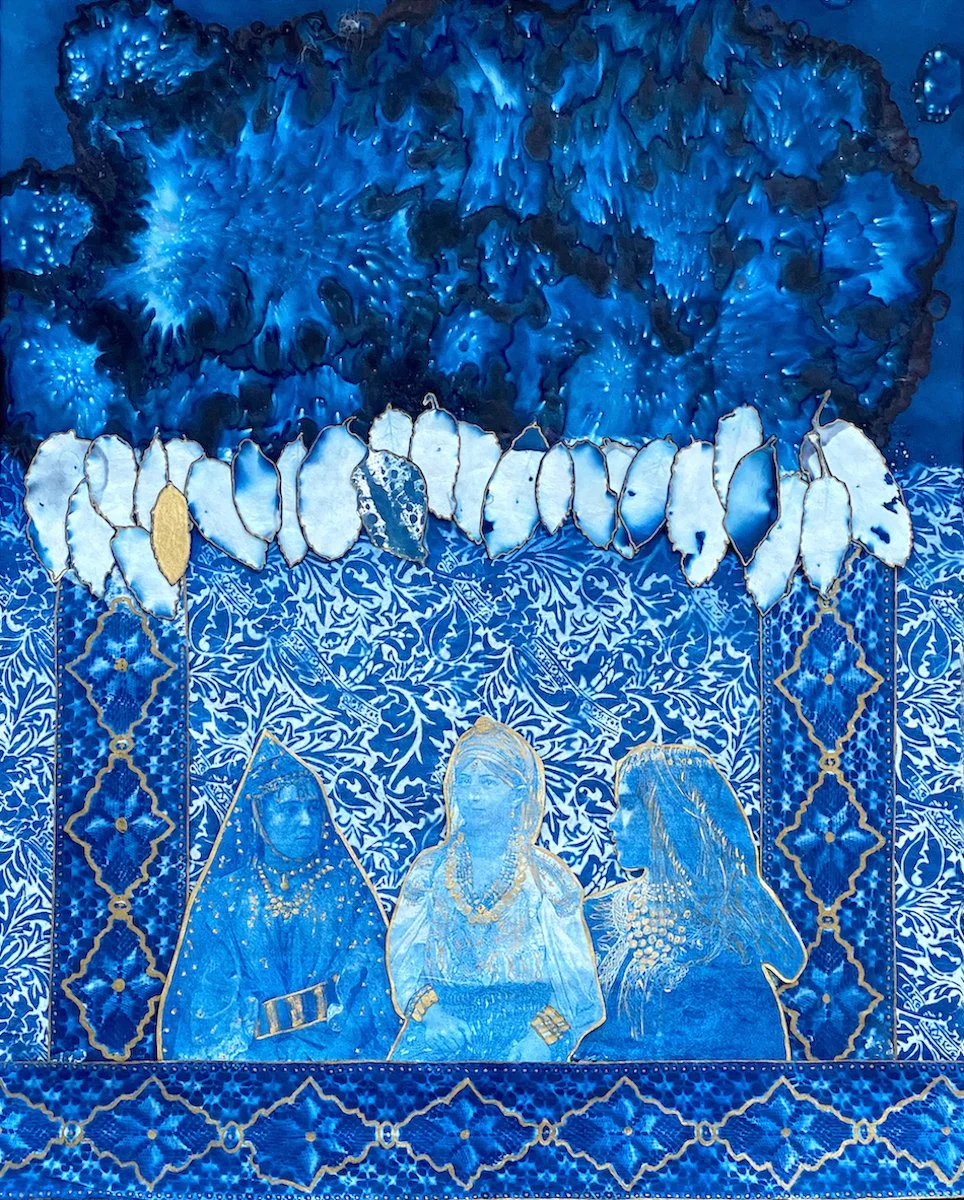Fruma Markowitz
Searching for the Kahinah | “Searching for the Kahinah” is part travelogue, part archive, part fact, part flight of fancy, but mostly a visual journey celebrating the many interwoven narratives and unique intersections of culture and tradition characteristic amongst women of the Maghreb (North Africa). During a long-awaited trip to Morocco in 2020, I learned that Jewish, Muslim, and Amazigh (Berber) women have shared friendship, plus a confluence of stories and myths, religious beliefs and practice, personal adornment, and handcraft design that goes back centuries - and became intrigued. I found it remarkable that groups we in the West consider at odds with one another, in fact lived side-by-side with respect for years, mostly because the women amongst them made it so. Since that trip, I've built an ongoing personal photographic project based upon this foundational concept.
After October 7 of last year – as a Jewish woman, and a photographer – this story of Jewish- Muslim-Amazigh co-existence and friendship became only more emotionally poignant for me. The war between Israel and Gaza is painful any way it is approached. My instinct says to me that if women were running the show, things could look very different in the Middle East. The Kahinah, who was a real historical figure of the 8th Century, embodies precisely that female strength, heroism, and leadership for Jewish, Muslim, and Amazigh people alike. She is my muse.
Each work combines cyanotype and mixed-media collage elements with imagery from a vast archive of photos of these women, made by men at the turn of the 20th century at a time when North Africa was being colonized by Europeans. Sold as tourist postcards, the images were meant to “other” these women/cultures as “exotic,” souvenirs of a way of life considered antiquated, “barbarian,” and destined to be replaced by a superior (French) Empire. The women depicted were often sexualized and labeled with a photographic nod to the Orientalist movement in painting that was still in vogue at that time.
My imagination and a pair of scissors literally cut the portraits out of this posed, imposed reality, and offers them another world - a woman’s world - where my historical research coupled with their shared connective tissue can be realized within a new context, far away from the romanticized version of them as “other.” Cyanotype, with its rich blueness, is for me the appropriate process to use in making these works. Blue is not just any color in the cultures of North Africa and the Middle East. In this part of the world, the color blue represents a deep spiritual force that protects against the Evil Eye, of which women are to a large extent, the arbiters thereof.
My images aim to turn all this on its head, to reverse the gaze - the power - that is male. Here I’m offering a point of view that, between moments of factual observation and flights of fancy, considers an alternative space where women look directly back and hold the gaze. https://frumamarkowitz.photo















